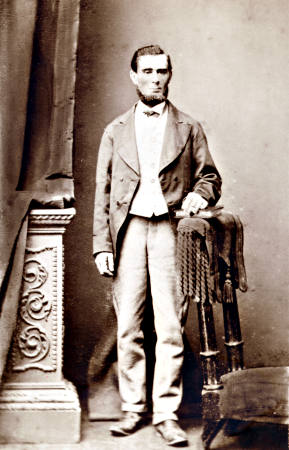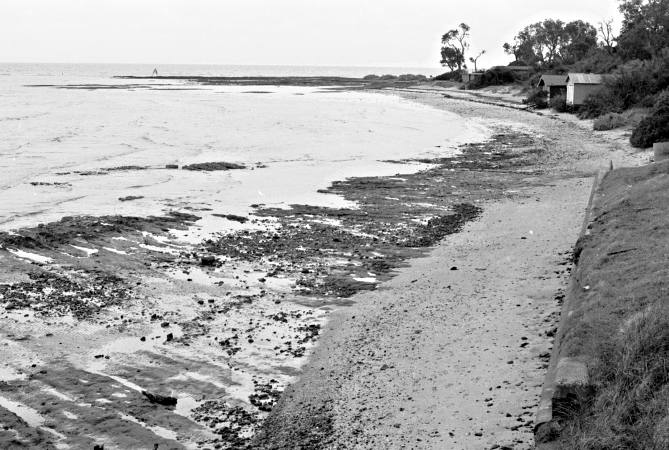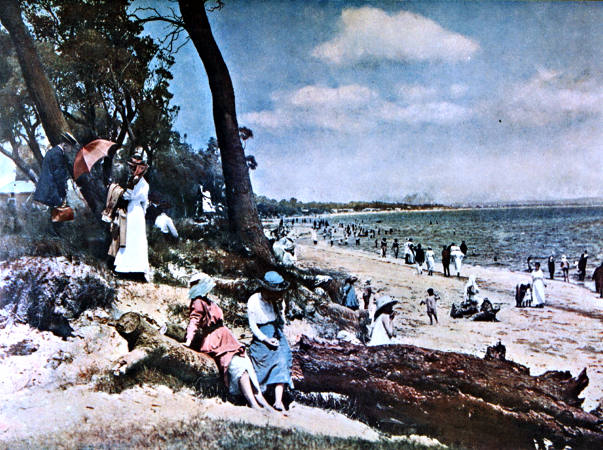John Watkins: Fisherman

John Watkins 1832 – 1911.
John Watkins was born in Liverpool, England on November 11, 1832 and followed the careers of his father and brother, both of whom were Master Mariners.
John too, began as an apprentice seaman, rising to the rank of Third Mate – his last ship being the SS Wacousta, which sailed for Sydney on September 5, 1854. When this ship arrived back in London it was noted that John had discharged himself at Sydney on April, 27, 1855.
His father, Captain Richard Watkins had arrived in Melbourne in 1852 where he became seriously ill. It is believed that when news of his father’s illness reached London, John Watkins may have been influenced to sail to Australia to be with him. [2]
Richard Watkins, Master Mariner, died at Prahran, Victoria on April 14, 1854 as a result of heart disease, before his son John arrived in Australia. Captain Richard Watkins was buried in the Melbourne Burial Ground on April 16, 1854. He had been in Victoria for eighteen months. [3]
Little is known of John Watkins’ activities in Victoria immediately after the death of his father, however, it is known that within a few years he had established himself as a fisherman at Ricketts Point, Victoria, within the Parish of Moorabbin.
On March 17, 1862 John Watkins, Fisherman, married Margaret Elizabeth Townend at St Andrew’s Church of England, Brighton. John was aged 29 and Margaret was 22 years of age. Prior to the marriage both were residents of Cheltenham. David Scott signed his name as a witness to the marriage and Caroline Scott made her mark ‘X’. [4]
Margaret Elizabeth Townend was born in Elizabeth Street, Melbourne on October 6, 1840 to Henry and Barbara Townend. She was baptised at St James’ Church of England, Melbourne, on November 13, 1840.
After their marriage John and Margaret Watkins took up residence in a house on the coast of Port Phillip Bay, in the area now known as Beaumaris. It is believed that their home was close to the water in the vicinity of Burgess Street, Beaumaris. This sparsely populated seaside region was named “Rickard’s Point” on the Plan of Subdivision drawn by George Francis, Surveyor, in December, 1875. “Richard’s Point Beach” and “Richard’s Point” were recorded as the places of birth of the first three children born to John and Margaret Watkins. [5] Later, the name “Rickard’s Point” was changed to “Ricketts Point.”
In honour of John Watkins, the area where he resided, just to the south-east of Ricketts Point was officially named Watkins Bay. A fitting tribute to one of the most diligent and respectable pioneer fishermen of the area.

Watkins Bay, 1984. Courtesy Leader Collection.
Just prior to the birth of George, the third child, at Rickard’s Point on June 3, 1866, John Watkins bought land on the Long beach, south of the Mordialloc Creek. The “Sale at Melbourne” records reveal that John Watkins paid £25-5-0d for 14 acres, 2 roods, and 34 perches of land on May 15, 1866. (It should be noted that, initially, the purchaser was incorrectly recorded as Watson, instead of Watkins). [6]

Beach South of Mordialloc Creek, c1900. Courtesy Kingston Collection.
Prior to purchasing the land on the Long Beach, John explored the coastline and had already built, in the sand dunes south of the Mordialloc Creek, a small shack in which he stored nets and fishing gear. The move to Long Beach enabled him to take advantage of the excellent fishing waters near the Mordialloc Creek, and also to avail himself of the safe haven of the Creek in stormy weather.
“When the fishermen brought in their catch, the fish were packed into fish baskets and the aboriginals willingly carried the fish baskets up to the horse drawn transport depot. (Later the fish was transported to Melbourne by rail after the Mordialloc railway line opened in 1881). For their help they were rewarded with ‘baccy’ – tobacco, flour, sugar etc.; (no liquor allowed in those days). Some fish was reserved for the local trade.
The boundaries of John’s land purchase were – Point Nepean Highway, to the actual beach frontage, the north boundary being Watkins Reserve (and near which he built his first home), and to the south – including both sides of Hearle Avenue, Aspendale.” [7]
After they were established in Mordialloc, John and Margaret had three more sons and one daughter.
John Watkins, fisherman, and his sons made a significant contribution to the establishment of the City of Melbourne, for it was they who faced the hazards of the sea to provide the fish, a major part of the food supply, for the citizens of the fledgling city.
The risk to their lives was ever present as they faced the constantly changing elements of Port Phillip Bay, where wind currents and temperatures could change in a matter of minutes. Their versatility was great, they even made their own cotton fishing nets and tanned them with local wattle bark.
Not only did John Watkins run a successful fishing business, with the support of his wife, but he raised a large family of children, ensuring always they were provided with home, food and education.
The Watkins family history records that the Watkins Reserve, between Nepean Highway and the beach, being part of John’s original land purchase, was donated by John as parkland for the benefit of the wider community. [8]
John Watkins built his final home at 8 Hearle Avenue, Aspendale; a double fronted weather board residence on the south-west corner of Hearle avenue, on the beach front, and named it Clouera.
John Watkins died , aged 78 years at Aspendale on April 1, 1911 from senility and asthenia. He was buried in the Cheltenham Pioneer Cemetery, Charman Road, next to the railway station. [9]
After the death of her husband, Margaret Elizabeth Watkins retained the business side of the fishing enterprise with the assistance of her sons George and Jack. She was admired for her culinary skills. Her Christmas cakes were so large that they were taken up to the baker’s oven for cooking and her Christmas puddings were a legend. [10] She died, aged 79 years at Point Nepean Road, Aspendale, from senility on September 4, 1920. Margaret Watkins was buried with her husband in the Church of England section of the Old Cemetery at Cheltenham two days after her death. [11]
One and all can be proud of their achievements, for which they should be honoured
Footnotes
- This story has been abridged from: Joy, Shirley M., John Watkins and Family at Beaumaris and Mordialloc Victoria, Australia. and used with permission.
- Watkins Family History Notes by Nana Smith, the great grand-daughter of John and Margaret Watkins.
- Death Certificate of Captain Richard Watkins, 1854.
- Marriage Certificate of John Watkins and Margaret Townend, 1862.
- Three children born at Rickard’s Point - William 1862, Jane 1864, George 1866.
- City of Kingston Origins, Edited by F R (Frank) McGuire.
- Watkins Family History Notes by Nana Smith.
- Watkins Family History Notes by Nana Smith.
- Pioneers Cemetery - Grave Reference 160, ECE, O.
- Watkins Family History Notes by Nana Smith.
- Death Certificate of Margaret Elizabeth Watkins, 1920.
